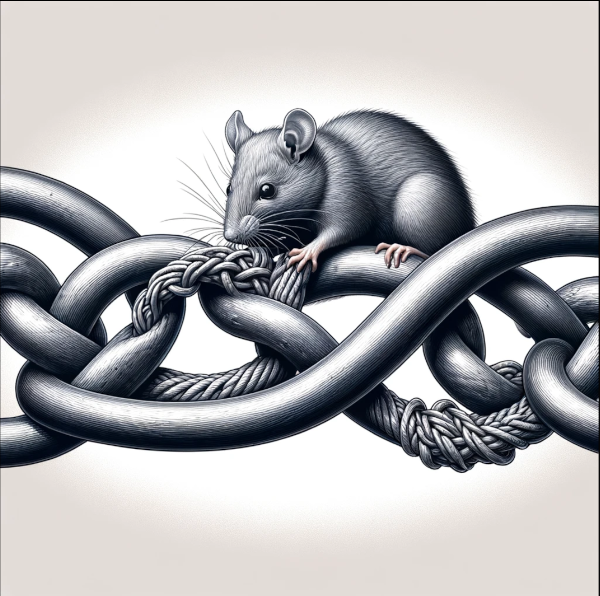Decentralization in governance has been a concept of interest across various epochs, from ancient to modern times. Traditional governance systems have evolved significantly, reflecting the social, economic, and technological contexts of their times.
In ancient civilizations, governance often revolved around centralized figures like monarchs or emperors. However, elements of decentralization existed, such as the Athenian democracy, where citizens had direct say in state affairs.
The modern era has seen a shift towards more complex forms of governance, including representative democracies where elected officials make decisions on behalf of their constituents. This system, while more decentralized than autocratic regimes, still centralizes power within a specific political class.
Web3 and Decentralization
Web3 represents the next phase of the internet’s evolution, emphasizing decentralization, blockchain technology, and token-based economics. This new digital landscape offers revolutionary approaches to governance, challenging traditional centralized models.
In Web3, governance goes beyond mere decision-making. It involves the orchestration of network activities, including protocol changes, updates, and community-driven initiatives. This decentralized approach contrasts sharply with the top-down governance models seen in Web2.
Web3 Governance Models
Web3 governance models refer to the frameworks and systems used to manage and make decisions within decentralized networks, particularly those based on blockchain technology. These models are crucial in the Web3 ecosystem, where traditional centralized control is replaced by distributed and community-driven approaches. Here are some key types and aspects of Web3 governance models:
1. Direct On-Chain Democracy
In this model, governance decisions are made directly by the network participants, with each holding a certain amount of tokens or stake in the network. Votes are cast and recorded on the blockchain, ensuring transparency and immutability. Decentralized Autonomous Organizations (DAOs) often use this model, where token holders vote on proposals related to the project’s direction, development, and use of funds.
2. Direct Off-Chain Democracy
Similar to on-chain democracy but voting occurs off the blockchain. This approach can reduce transaction costs and speed up the voting process. Direct off-chain democracy may introduce elements of trust and security concerns, as the voting is not recorded on the immutable blockchain ledger.
3. Representative Democracy
Borrowing from traditional governance systems, this model involves electing representatives who make decisions on behalf of the token holders or community members. It can balance efficient decision-making with community input and reduce the burden on individual participants to vote on every issue.
4. Athenian Sortition
This model involves randomly assigning decision-making power to community members, preventing concentration of power and potential biases. It might result in decisions being made by potentially uninformed or unrepresentative participants.
5. Quadratic Democracy
Based on quadratic voting, this model allows participants to cast votes that are weighted both by the number of tokens they hold and the number of participants. It aims to prevent the wealthiest participants from dominating the decision-making process. Implementing this model requires careful balancing to ensure fairness and effective governance.
6. Liquid Democracy
This hybrid model allows participants to either vote directly on issues or delegate their voting power to someone they trust. Delegations can be specific to certain types of decisions or general. It combines elements of direct and representative democracy, offering flexibility and potentially increased participation. However, there are unsolved theoretical challenges such as Ballot Privacy.
7. Algorithmic Governance
In some Web3 models, governance decisions are automated through algorithms or smart contracts based on predefined rules or conditions. While this can increase efficiency, it may lack the flexibility to handle complex, unforeseen situations that require human judgment.
Examples of Web3 Governance

Curve Finance is a decentralized exchange (DEX) on the Ethereum blockchain, specializing in stablecoin trading. It is designed to enable efficient cryptocurrency trading with low slippage and minimal fees, primarily for stablecoins (cryptocurrencies designed to minimize price volatility).
Lido is a decentralized finance (DeFi) solution that offers liquid staking for Ethereum. It allows users to stake their Ethereum (ETH) tokens without locking up assets or maintaining staking infrastructure, addressing some limitations of Ethereum’s staking mechanism.
The MetaGovernance Project is an initiative focused on exploring and developing governance systems within the Web3 and blockchain spaces. Its primary aim is to address the complexities and challenges of decentralized governance.
These platforms illustrate Web3 governance in action. They demonstrate how decentralized decision-making can drive innovation and value creation. However, they also highlight challenges like ensuring broad participation and avoiding the centralization of power among a few token holders.
Web3 Governance Opportunities and Challenges
Web3 governance offers the opportunity to revolutionize decision-making processes through decentralized, community-driven models, empowering individuals and enhancing transparency in various digital platforms. However, it faces significant challenges such as ensuring equitable participation and avoiding concentration of power.
Opportunities
- Enhanced Participation and Transparency: Web3 governance models can offer more inclusive and transparent decision-making processes.
- Innovation in Governance Mechanisms: The use of blockchain and smart contracts in governance can lead to innovative solutions for long-standing governance issues.
- Greater Flexibility and Adaptability: Decentralized models can quickly adapt to changes, reflecting the dynamic nature of the digital world.
Challenges
- Risk of Centralization: Despite the emphasis on decentralization, there’s a risk of power becoming concentrated among a few influential token holders.
- Governance Scalability: As Web3 platforms grow, ensuring effective governance at scale becomes a significant challenge.
- Technological and Participation Barriers: The complexity of blockchain technology can be a barrier to participation for the general public.
Conclusion
Web3 governance presents a paradigm shift in how we think about organizing and making decisions in a digital society. While it offers the potential for more inclusive and transparent governance models, significant challenges remain. Addressing these challenges will require a blend of technological innovation, thoughtful design, and learning from historical governance models. As Web3 continues to evolve, so too will our approaches to governing these new digital spaces.
References
- “The exchange theory of web3 governance.” Wiley Online Library. Link
- “Algorithmic governance, code as law, and the blockchain common.” Frontiers. Link
- “Designing reward systems for Web3 governance.” a16z Crypto. Link
- “A Comprehensive Study of Governance Issues in Decentralized Finance Applications.” ArXiv. Link
- “Metaverse governance: An empirical analysis of voting within Decentralized Autonomous Organizations.” ScienceDirect. Link
- “Navigating decentralized governance in web3: balance of transparency and control.” Cointelegraph. Link
- “Web3 Governance Models.” Hiro Blog. Link
- “Web3 implications of blockchain mutations for internet governance.” GCR21. Link
- “What Web3 organizations can learn from governance history.” Stanford GSB. Link
- “Web3 wrong question.” Wired. Link
- “ChainLink: DAO complexities.” Chainlink Blog. Link
- “Blockchains and Voting: Somewhere between hype and a panacea.” Semantic Scholar. [Link]



